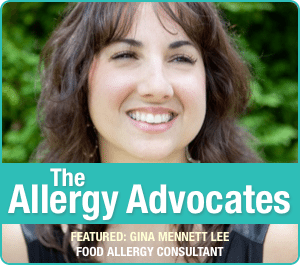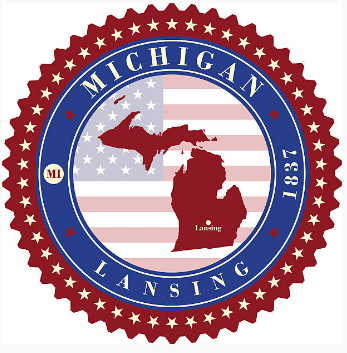
Updated January 2022 – Discussions about systemic racial bias have gained prominence in the past few years, and health care is an important aspect of these conversations. For instance, several studies have raised the striking disparities for the Black community in the field of allergic disease. These inequities must be addressed, and made a priority.
Studies and statistics over the past decade show that African Americans, and especially children, are significantly more likely than white Americans to have food allergies or asthma – or both. Food allergies can trigger anaphylaxis, and those with asthma can suffer severe attacks. These are serious diseases that require constant management and healthcare guidance – supports that, research shows, are not equally available to the Black community.
Study findings reveal that Black Americans are less likely to have access to an allergist, less likely to use corticosteroid asthma medications or to have an epinephrine auto-injector in case of anaphylaxis.
Strikingly, Black children are six times more likely to die of an asthma attack than white children.
With food allergies, other communities – American Indian, Asian American and Hispanic – also appear more significantly impacted than white Americans.
Another disturbing fact: the Black community shoulders the greatest allergic disease burden – with the least support. It’s a healthcare situation that’s inequitable and dangerous – given that both food allergies and asthma can turn quickly life-threatening. It calls out for far more priority, planned actions, education, and government assistance.
To help inform discussions about allergies and disparity, Allergic Living created the resource that follows, which summarizes key studies and reports on this topic. Change is necessary, and it starts with better recognition and understanding of the Black community’s experience with food allergies and asthma.
Studies on the Impact of Food Allergies
Food Allergy Nearly Doubled in Black Kids over 23 Years
This 2014 study broke new ground, finding the presence of food allergy varied significantly depending on a person’s race or ethnicity. The analysis showed that food allergy increased among Black children at a rate of 2.1 percent per decade, 1.2 percent among Hispanics and 1 percent among whites.
The research team, led by Dr. Corinne Keet of Johns Hopkins University, analyzed parent-reported data on 452,237 American children. The data was extracted from 10,090 medical papers published between 1988 and 2011.
Study conclusion: “Self-report of food allergy among U.S. children has sharply increased in the past two decades. The increase has been greatest among non-Hispanic Black children, a disparity that needs to be investigated.” Published in Annals of Allergy, Asthma and Immunology in 2014. Link to news release is here and to study here.
Public Health Impact of Childhood Food Allergies
Dr. Ruchi Gupta and her team at Northwestern University’s school of medicine published a study in 2018 that found 7.6 percent of U.S. children have food allergies. Among the findings of this wide-ranging study, the authors reveal that non-Hispanic African-American children are at “significantly elevated risk” for food allergies, as compared to non-Hispanic white children.
Children of Hispanic background had a slightly lower risk for food allergy, but were still at greater risk than white children. Both Black and Hispanic groups were less likely to have a current epinephrine prescription, and more likely to have visited the emergency department.
Among conclusions: “Previous findings of racial differences in food allergy prevalence were supported here with elevated rates identified among non-Hispanic African American children.” Published in Pediatrics in 2018. Link to study is here.
In 2011, Gupta and her team released their much-cited prevalence study that pegged food allergy in children at 8 percent, a higher rate than previously known. It also found much higher incidence of African American children having food allergies and reactions, but a lower chance of having been diagnosed. Dr. Gupta discussed her thoughts on this in an interview with Allergic Living. Published in Pediatrics in 2011. Link to study is here.
Inner City, Early Life Exposures and Food Allergies
Dr. Emily McGowan and colleagues published a 2014 study on an inner-city cohort of 516 children. Of the kids who were at high risk for food allergy, 74 percent were Black and 18 percent Hispanic. By the age of 5 years, 9.9 percent of these children had developed food allergies, which was a considerably higher prevalence than the rate of 6.5 percent of children having food allergy in a general population survey.
Among conclusions: “The cumulative incidence of food allergy among inner-city children is substantially higher than recent estimates among the general U.S. pediatric population. It is possible that previously lower estimates of food allergy in inner-city populations were a result of under-diagnosis and under-treatment, and future studies should be conducted to address this significant health disparity.
“Although this study further identified potential environmental factors associated with the development of food allergy, additional study is clearly needed to further explore those factors that might be modifiable.”
Published in Journal of Allergy and Clinical Immunology (JACI) in 2014. Study link is here.
Higher Rates of Wheat, Corn, Seafood Allergies
This study got into more detail than most, examining the differences in allergic disease profiles among different race and minority groups. Among the study population of 817 children with food allergies, African-American children had significantly higher rates of allergy to wheat, soy, corn, fish and shellfish compared to white kids. They also had higher rates of asthma and eczema.
Hispanic children had significantly higher rates of allergy to corn, fish and shellfish, higher rates of eczema, but a similar rate of asthma compared to white children.
Dr. Mahboobeh Mahdavinia, lead author of this 2016 paper, noted the high incidence of wheat allergy in African-American kids, and the fact that wheat is a ubiquitous staple. “The higher rate of wheat allergy among African American children could potentially explain the higher rates of anaphylaxis … and the emergency room visits observed in this population.” Published in JACI in Practice in 2014. News release link is here and the study is here.
African American Boys at Increased Risk for Food Allergies
In October 2010, Dr. Andrew Liu of the University of Colorado and colleagues were the first to conduct a U.S.-wide study of food allergy prevalence across all age groups and to consider racial differences. Blood tests to measure IgE-specific antibodies were done on 8,200 participants in the National Health and Nutrition Examination Survey (NHANES).
The findings were striking: the Black community in general, and younger boys in particular, were much more likely to have food allergies than the general population. A release on the study said: “The odds of male Black children having food allergies were 4.4 times higher than others in the general population.” Published in JACI in 2010. News release is here. Study link is here.
Medicaid and Higher Disease Odds
A June 2020 study of Medicaid-enrolled children found far higher prevalence of food allergy among Asian, Black, Hawaiian and Pacific Island children as compared to white kids. The study was conducted by Northwestern’s Dr. Gupta and her team. Compared to Caucasian children, Asian American children had 24 percent higher odds of food allergy, Hawaiian/Pacific Island children had 26 percent higher chance of having food allergy, and African American children had 7 percent higher odds of the disease.
Puzzling to the research team, however, was that the Medicaid data showed a national prevalence for food allergy within the program of under 1 percent. That’s far lower than the Northwestern team’s 2018 survey estimate of 7.6 percent, or physician-confirmed reports of 4.7 percent national prevalence. Published in Academic Pediatrics in June 2020. News release is here.
Further Study and Program Needs
When it comes to racial disparity and food allergy – from prevalence, to the “why” of it to programs – there is much work to do.
In late 2016, a key recommendation in a U.S. National Academies’ report on food allergy was for systematic collection of statistics on the disease. Allergist Dr. Hugh Sampson explained at the time that such data are necessary “because this helps us to prioritize food allergy as a public health problem, it also helps direct appropriate resources, and also helps us assess the risks in different populations.” To date, there has been little implementation from that report, although nonprofits continue to advocate for key parts of it.
Aleasa Word | Food Allergy & Healthcare Bias: A Black Mom’s Experience
See all available Talking Food Allergy podcasts
Studies, Statistics on the Impact of Asthma
The Centers for Disease Control and Prevention has in-depth prevalence data on asthma, including some specifics on race/ethnicity. These currently show:
– About 25 million Americans have asthma.
– Black children are twice as likely to have asthma as white children.
– Among Black non-Hispanic children, 14.1 percent have asthma. 10.2 percent of American Indian children have asthma, 7.5 percent of Hispanic children, and 6.8 percent of white children.
– In 2018, there were 3,441 annual U.S. asthma deaths (all ages). The death rate among those who were Black was more than twice any other race/ethnicity.
– In 2018, almost 54 percent of children of all races had one or more asthma attacks in the past 12 months.
See more CDC stats here.
Also see the 2018 report from the CDC and related agencies called Vital Signs: Asthma in Children – 2001-2016. It finds that between 2013-2016, emergency department or urgent care visits were higher among Black children (22.5%) than among white children (12.2%).
African American Children May Need Different Asthma Treatments
National Jewish Health researchers wanted to see if African Americans with poorly controlled asthma might benefit from adding a LABA bronchodilator to treatment. This had worked well in clinical trials, and is the recommended treatment to improve asthma control. But the team also knew that few participants in the original trials were African American. So Dr. Michael Wechsler and colleagues at several centers conducted two clinical trials: one with Black teens and adults, and one in Black children. Significantly, half of the children fared better with a regimen of higher steroids than with the added bronchodilator.
Comment: “This study suggests that we cannot look at results from one population and extrapolate the findings to African Americans or any other group,” Dr. Wechsler said. “If children do not respond to one treatment, parents and providers could consider another option because there is almost a 50 percent chance of having a better response.” Published in the New England Journal of Medicine. See NIH article here. Study link is here.
Pediatric Asthma Health Disparities
Johns Hopkins University researchers analyzed data from a national survey on 33,201 U.S. households to see if racial disparities in childhood asthma were explained by hardship and/or home environment.
Findings of the 2017 study: Black heads of households had a higher chance of having a child with asthma when compared to white heads of households. There was also a greater chance of visiting the ER for an asthma attack. When the researchers adjusted for “material hardship and home ownership,” the association between asthma and race decreased, but not eliminated. Regardless of race, living in poorer quality housing was associated with a higher rate of asthma diagnosis and visits to the ER.
Conclusion: “Poor housing quality in particular is strongly associated with asthma.”
Recommendation: Policy makers could target improving housing quality as a means of potentially reducing asthma disparities.” Published in Academic Pediatrics in 2017. Study is here.
Far Higher Death Rate Among Black Children with Asthma
Dr. Anna Chen Arroyo and her team from Brigham and Women’s Hospital looked at information collected on about 2,500 asthma deaths in kids from 2003 to 2014. Alarmingly, they found that African-American children are six times more likely to die from asthma than white or Hispanic kids.
Comment: Possible factors that contribute to a higher number of deaths among black youth are “access to care, environmental factors that trigger asthma exacerbations, or inherently more severe disease in these children,” said Chen Arroyo.
Conclusion: “Ensuring that all children have access to timely asthma care may prevent deaths.” Published in JACI In Practice in 2017. Article is here, study link is here.
Seeking Genetic Clues to Asthma’s Toll on Black Children
In an NPR report in 2016, University of California geneticist Marquitta White spoke of a study she’d undertaken that found an African American gene variant that was significantly associated with asthma, but hadn’t been seen in studies of children with European ancestry.
Comment: “The majority of genetic studies, not just in asthma but in most diseases, are done in Caucasian- or European-descent populations,” White said. “The longest studies do not really include very many minority populations, which means that most patients aren’t getting the best care, because we don’t really know what the disease etiology is in their particular population.” Published in Immunogenetics in 2016. Study link is here.
Disparities in Kids with Difficult Asthma
A multi-center research team analyzed data on asthma health in children with severe or difficult-to-treat asthma. The study involved 262 white children and 86 African-American children between the ages of 6 to 11 with severe asthma. The Black children were more likely to have very poorly controlled asthma (72.1% vs. 53.4%), and considerably more likely to have a recent ER visit for an attack (27.4% vs. 7.7%).
Conclusions: “Among children with severe or difficult-to-treat asthma, asthma burden is greater in Black than white children particularly related to several clinical and patient-reported outcome measures that are not explained by differences in background or clinical characteristics.” Published in JACI in Practice in 2018. Link to study is here.
AAFA Report on Burden of Asthma in Minority Populations
Back in 2005, the Asthma and Allergy Foundation of America did a major report on this issue.
Comment: “African Americans and Hispanics are the largest minority groups in the United States. These groups have the highest rate of asthma. Minorities have the highest asthma death rate. They also have the highest number of emergency room visits and hospital stays due to asthma.”
The report called for asthma education and management programs in the community and schools, as well as city, state and federal programs. Some have been implemented. See the report here.
Further Study and Program Needs
There has been better recognition and more programs involving asthma education and awareness of environmental triggers. But there are still too many asthma-related ER visits, hospital admissions, and deaths from this disease in the Black community.
School awareness and training remains an issue. Assisting in that regard, the School-Based Allergies and Asthma Management Program Act (SAMPRO) became law in January, 2021. View the new act here. It was championed by the AAAAI allergists’ organization, AAFA and other nonprofits.






